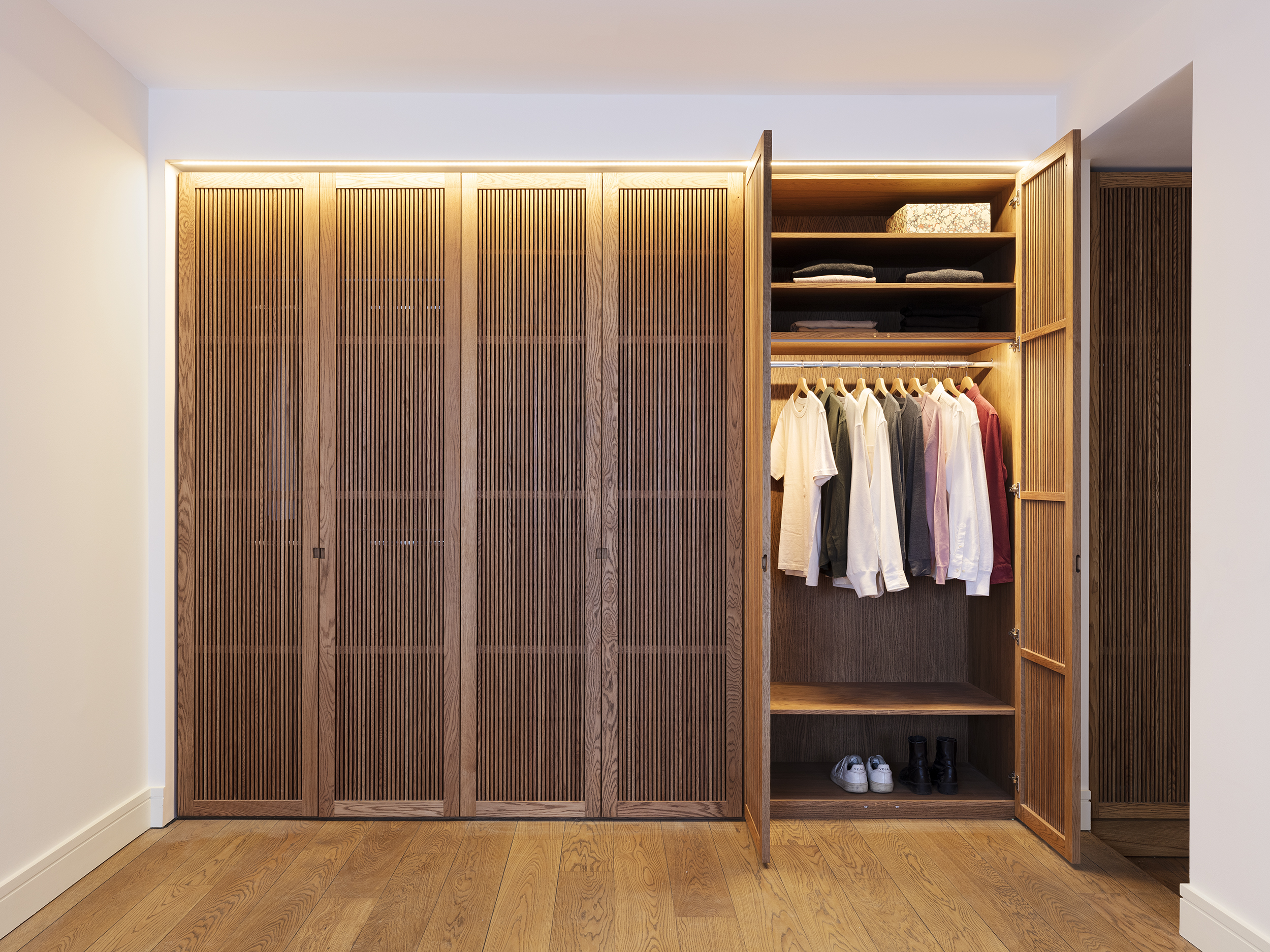
With the blooming flowers marking the start of the new season, the daunting chore of a spring declutter is looming. Purging your closet and parting with old items can be a tedious task. We'd be lying if we said we didn't have at least a couple of pieces of clothing that we have not worn in months (if not years).
Perhaps you'd like to make space for some fresh clothes or maybe you just can't handle the hoarding any longer. Either way, there's a new declutter tactic on the block that will help you get the job done. This method makes closet organization a breeze, and it helps you cut your clothes in no time. With a bit of effort, your closet will be freer and you'll finally be able to tick this off your to-do list so, without further ado, let's get into what the 90/90 method really is and why experts swear by it.
What is the 90/90 decluttering rule?

The concept of the 90/90 rule is fairly simple. If you haven't worn an item in the last 90 days and don't anticipate wearing it in the next 90 days, it's got to go. All you need to truly put this tactic to work is a little bit of energy and a whole lot of honesty. Created by Joshua Fields Millburn and Ryan Nicodemus of The Minimalists, it's a no-mess, no-fuss kind of organizing technique that will maximize the utility of the articles in your closet.
Founder of My Professional Organizer, Aaron Traub is a big believer in keeping only the essentials. 'I generally relate to tough love decluttering methods like the 90/90 rule,' he says. 'It works because it confronts the real underlying issue - "Do you have a use for this item?"' While the concept of regularly decluttering your clothes may seem intimidating, Aaron makes a great point. The 90/90 rule directly addresses the problem at hand, to the point where you can't really argue with yourself anymore.
The key to implementing a decluttering rule like this one is to personalize it to your living circumstances. Di Ter Avest, Founder of Di Is Organized, classifies the 90/90 decluttering rule as a good hack for people looking to minimize clutter and maintain a tidy environment. 'As with any rule or system you implement, consider your lifestyle, space, and needs,' she says. 'It can be highly effective for simplifying and organizing living spaces, especially closets.'
How should you apply the 90/90 decluttering rule?

Taking it slow and steady is the only way to practice this (or any) decluttering method. If you consider yourself a hoarder of clothes or you're limited to a very small closet, don't be too hard on yourself or the process may end before it even begins. Di suggests decluttering one area or category at a time to prevent being overwhelmed.
Both Di and Aaron recommend combining the 90/90 decluttering rule with the Konmari method to simplify the cleansing process. Introduced by Marie Kondo, the Konmari technique entails retaining items that 'spark joy' and removing items that don't. Practicing not one but two decluttering methods together may seem like an unnerving chore, but don't knock it until you try it. This just might be the answer to all your decluttering problems.
What situations is the 90/90 decluttering rule best for?

Aaron considers the 90/90 method to be perfect for the everyday closet but also says that he would not apply the rule to seasonal items and outfits that have been set aside for special occasions. On the other hand, Di says the rule may not work while organizing sentimental items. 'Some articles may hold sentimental value despite not being used frequently,' she says.
If you've been thinking about organizing your closet, this is your sign to put the 90/90 decluttering rule to work. Take some time to investigate your closet and get to pruning. Deep down you can't deny that your closet is home to clothing that no longer holds a place in your life. It's just a matter of admitting it to yourself and creating space for a new era of style. Decluttering your home also gives you a chance to be sustainably conscious, so don't forget to recycle the clothes you're getting rid of - or better yet, donate them to someone in need.







